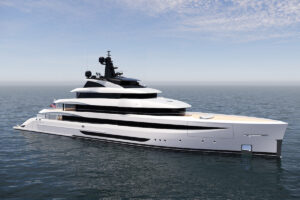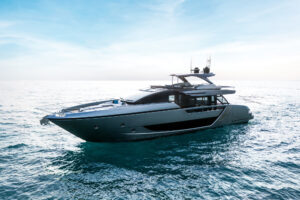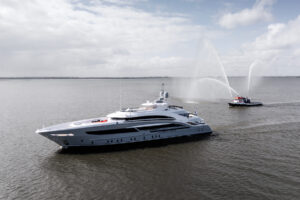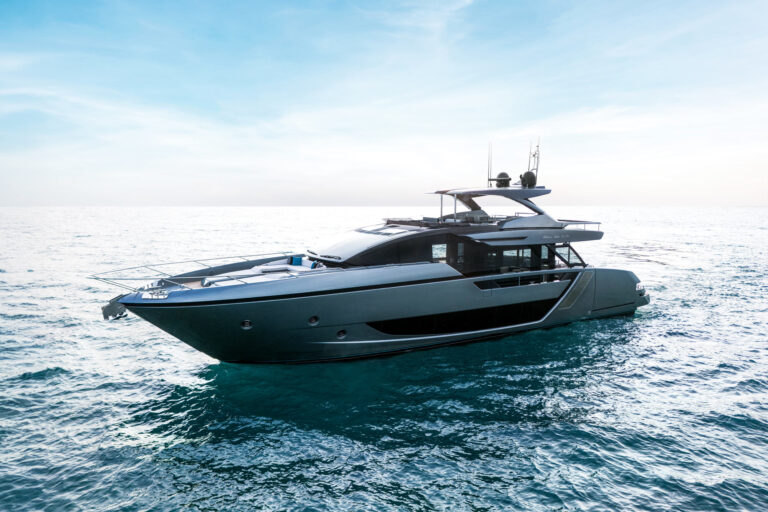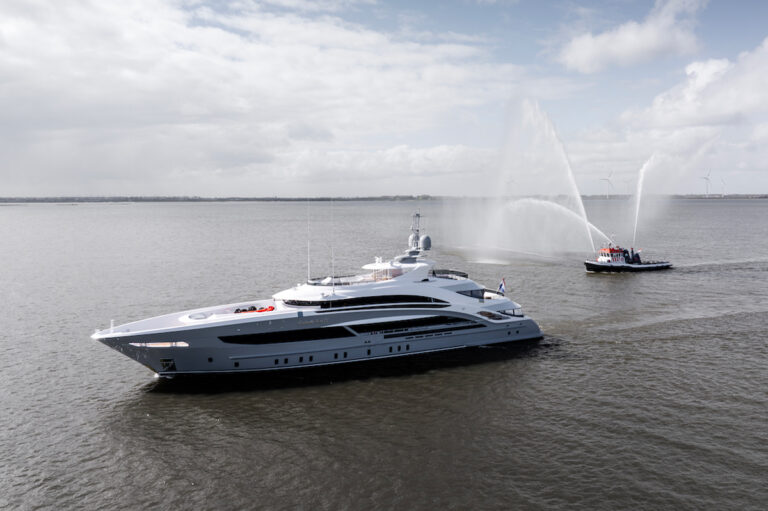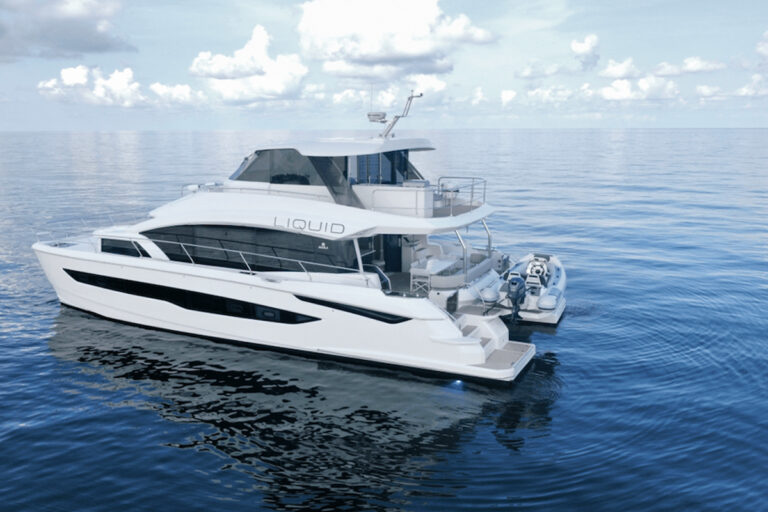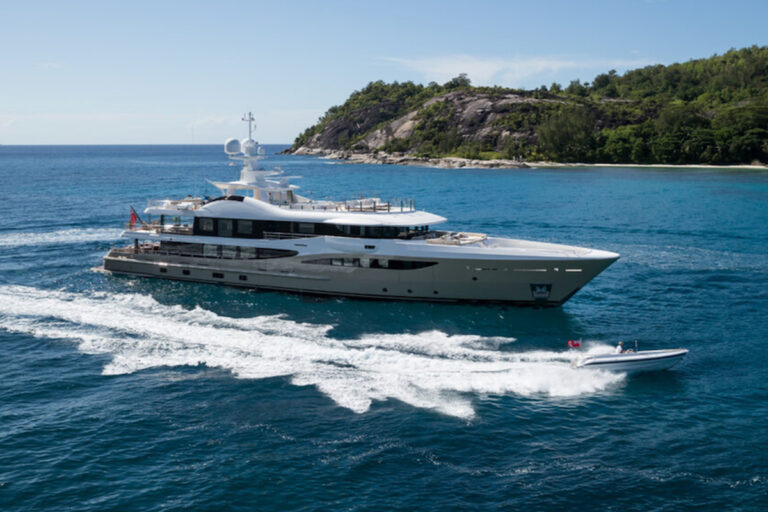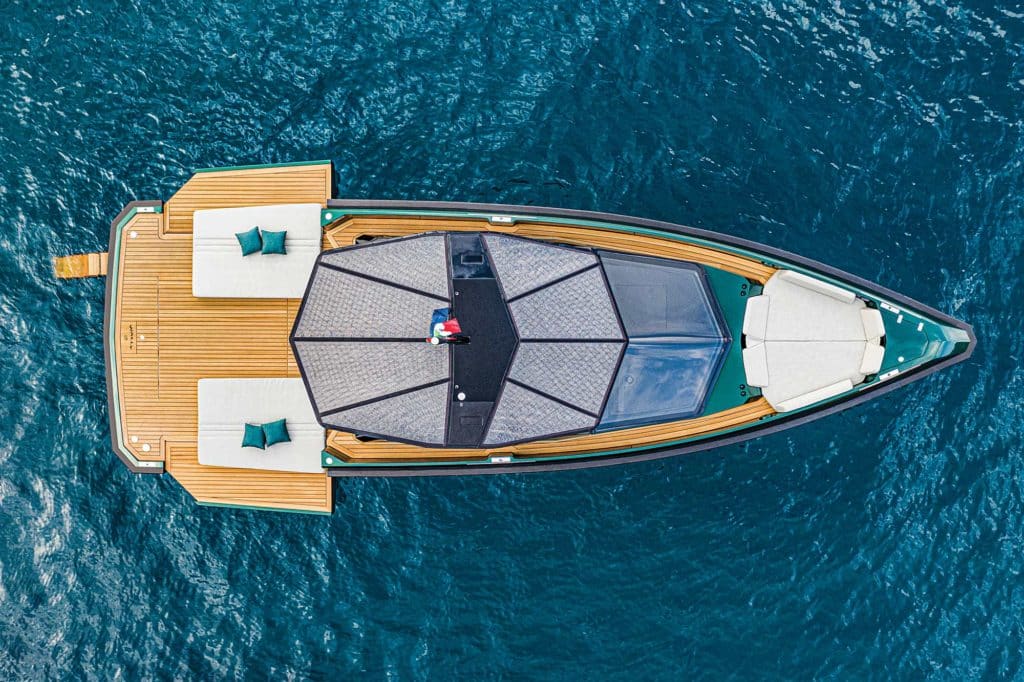
In the 43 Wallytender, the design signatures of Monaco-based Wally are immediately apparent: a near-plumb and wave-piercing bow, a low sheerline, chunky all-around rub rails, flush teak decking, and sun pads everywhere. As with other recent launches from this builder, the 43 has fold-down quarter cheeks that create beach decks aft, and there’s a cuddy cabin with a head under the foredeck, making the boat an option for weekends aboard.
But what makes the 43 different from previous Wallytender launches is a center cockpit that can be ordered with a galley module. The cockpit is created by high wraparound glazing that leaves room for practical side decks and provides a little more weather protection and privacy on board.
In other words, the 43 is proof positive that the Wallytender has evolved again—in ways that continue to make the boating experience better.
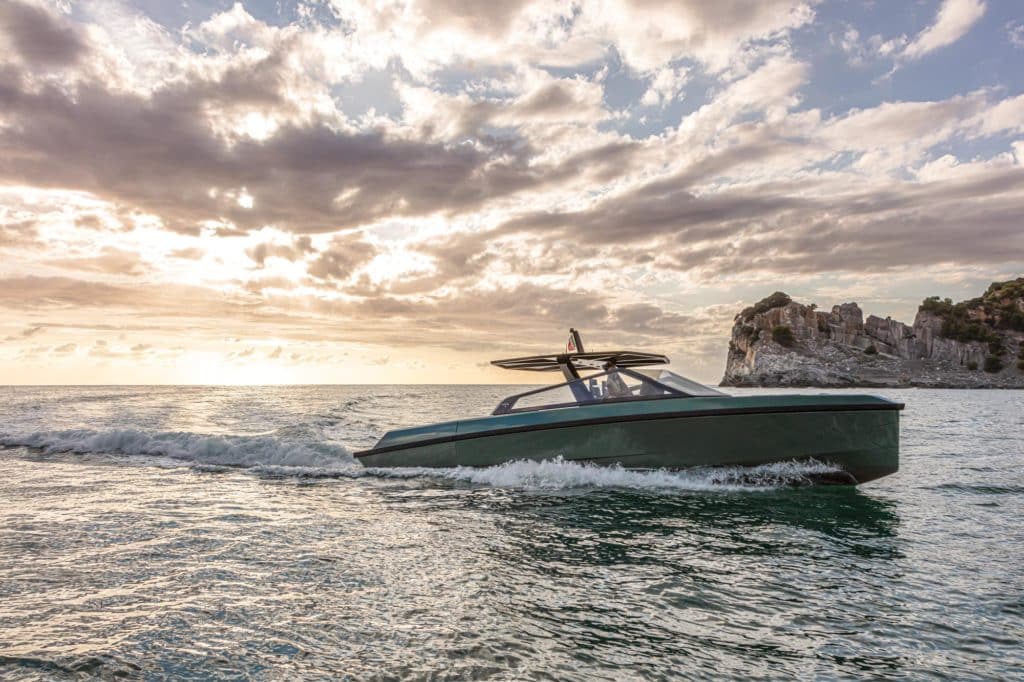
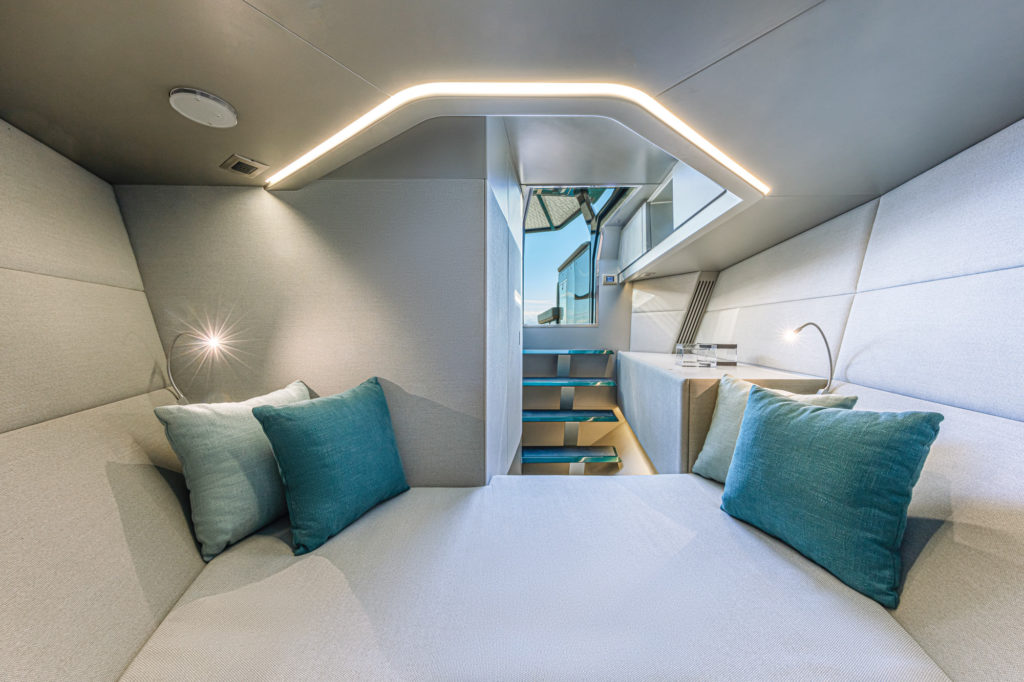
Attention to detail has always been Wally’s fairy dust, and it’s evident in far more than the 43′s center cockpit. Also impressive is the windshield, which is a one-piece, thick acrylic panel with a clean, simple molded crease down the middle. Then there’s the broad use of carbon fiber: on the window framing to port and starboard, the framed pilot seats, the instrument console, the pedestal table in the cockpit, and the yacht’s T-top, which has sailcloth panels. All of these details add to the boat’s unmistakable style.
The 43, like all the latest Wallytenders, is built in Forli, Italy, by the Ferretti Group, which has owned Wally for the past two years. Hulls are vacuum-bagged with solid vinylester laminates below the waterline and foam cores above it.
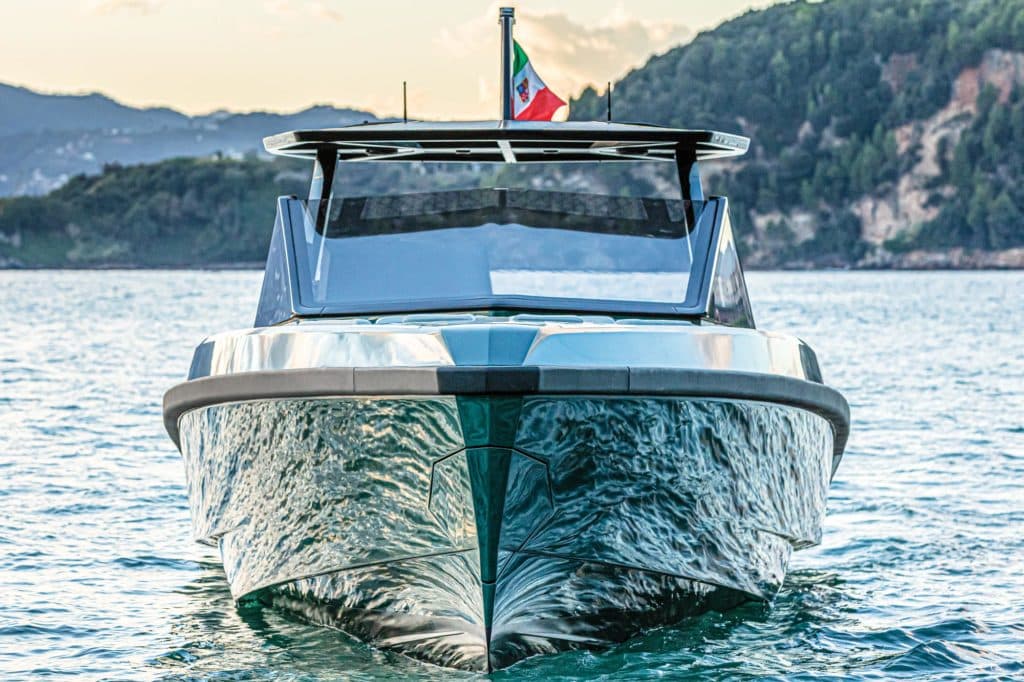
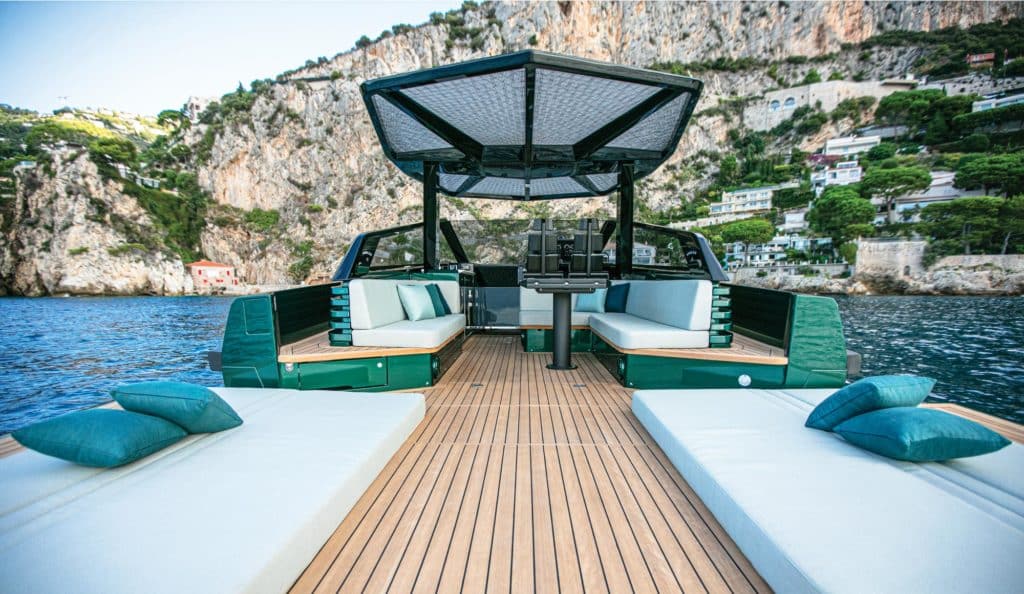
Standard propulsion is twin 380 hp Volvo Penta Aquamatic D6 Duoprop sterndrives, but the 43 I got aboard had the upgraded twin 440 hp D6 engines, which reportedly add around 4 knots to the yacht’s top-end speed. As with every other Wallytender I’ve driven over the years, the 43′s handling was light and precise.
When I opened up the diesels to their maximum 3,600 rpm, the 43 managed a consistent 39 knots while taking 3-foot seas in stride, all at more than half-load with six people, full water and just more than half fuel on board. The performance falls in line with Wally’s promise of a 40-knot top-end speed.
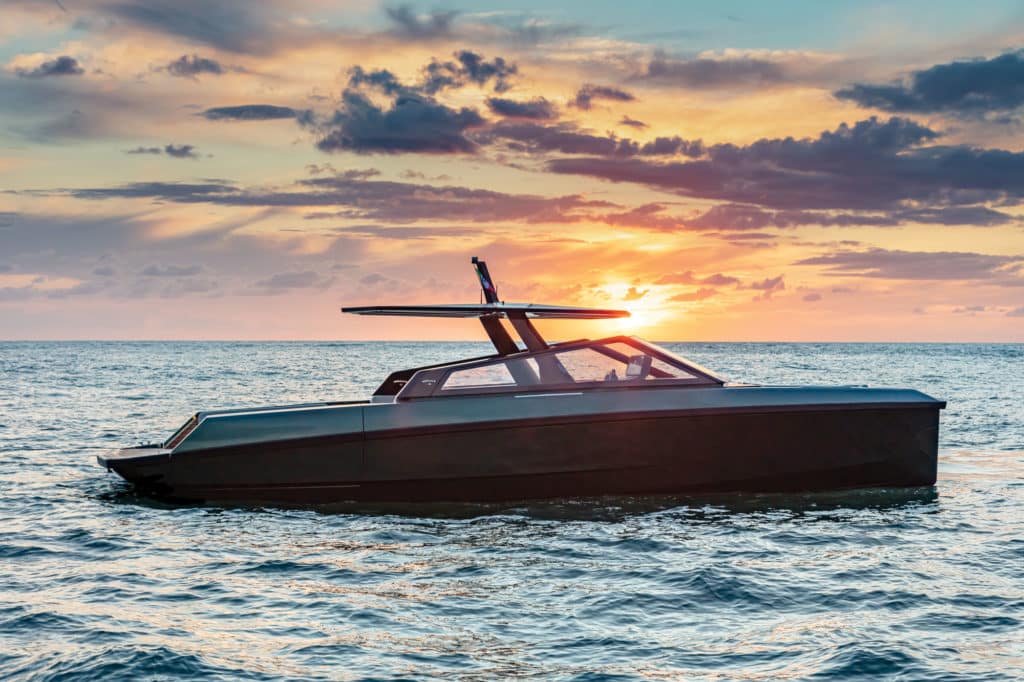
With the engines spinning at 3,000 to 3,200 rpm, expect to cruise at the 27- to 30-knot mark, at which point the Volvo Pentas consume more than 30 gallons per hour, providing a range of 270 to 280 nautical miles.
The yacht’s standard finish is white gelcoat, but Wallytender owners typically opt for paint. Hull No. 1 of the 43 Wallytender has an iridescent metallic “gator green” hull. The color is an homage to the Wallygator, the boat that Wally founder Luca Bassani built almost 30 years ago, in the earliest days of the brand.
Styling and details may change over the years, but cool is just cool forever.
Take the next step: wally.com

